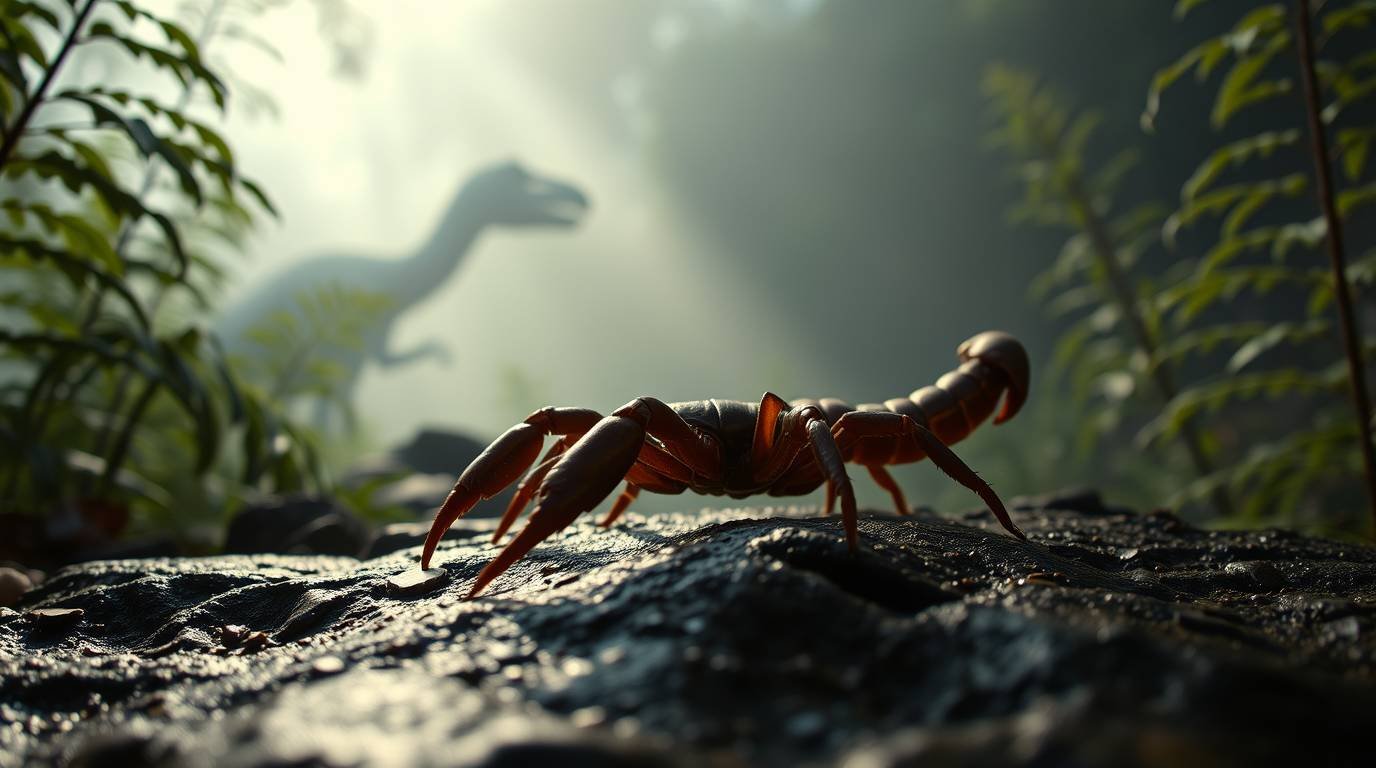Imagine a scorpion hunting alongside dinosaurs. Scientists Just Found Its Fossil!

Close your eyes and picture the world 125 million years ago. Towering dinosaurs roam lush landscapes. But lurking beneath the ferns, another ancient predator was on the prowl—a scorpion large enough to make its mark in a world dominated by giants. This isn’t just fantasy; scientists have recently unearthed the fossil evidence.
A Groundbreaking Discovery in China’s Jehol Biota
Deep within the fossil-rich layers of China’s famed Jehol Biota, researchers have uncovered something extraordinary: a remarkably preserved fossil of an ancient scorpion species, now named Jeholia longechengi. Dating back an incredible 125 million years to the Early Cretaceous period, this find offers a rare window into the smaller predators that shared the ecosystem with dinosaurs.
Meet Jeholia: A Cretaceous Predator
While perhaps not “giant” by T. rex standards, Jeholia longechengi was a formidable creature for its kind and time. Measuring around 4 inches (10 cm) long, it was significantly larger than many other known ancient scorpion species.
Its fossil reveals key adaptations:
- Long Legs and Slim Pincers: Unlike some modern scorpions with bulky claws, Jeholia possessed longer legs and more slender pincers. This suggests it might have been a more agile hunter, perhaps built for swift strikes rather than crushing power.
- Venomous Threat: Like its modern relatives, this ancient scorpion was undoubtedly venomous, using its stinger to subdue prey.
Life in a Prehistoric Food Web
The Jehol Biota is famous for its incredible preservation, showcasing a diverse ecosystem. Jeholia longechengi played a vital role within this intricate prehistoric food web. Evidence suggests its diet likely included
- Spiders
- Lizards
- Possibly even small, early mammals
This scorpion wasn’t just surviving; it was thriving, a mid-level predator navigating a world filled with both smaller prey and potentially much larger threats (dinosaurs!).
Why This Fossil is So Special
The discovery of Jeholia longechengi is significant for several reasons:
- First of Its Kind: It represents the very first scorpion fossil discovered from the Mesozoic Era (the age of dinosaurs) within China.
- Global Rarity: It’s only the fourth Mesozoic scorpion species identified worldwide, making it an incredibly rare find.
- Unique Preservation: Most prehistoric scorpion fossils are found encased in amber (fossilized tree resin). This specimen, however, was preserved in sedimentary rock. This type of preservation is much rarer for scorpions and can potentially reveal different details about their anatomy and environment.
A Window to a Lost World
The unearthing of Jeholia longechengi reminds us that the age of dinosaurs was populated by a vast array of fascinating creatures, big and small. This 4-inch venomous predator, hunting in the shadows of giants, adds another layer to our understanding of life 125 million years ago. It’s a tangible piece of a wild, prehistoric world, locked in stone and now brought back into the light.


